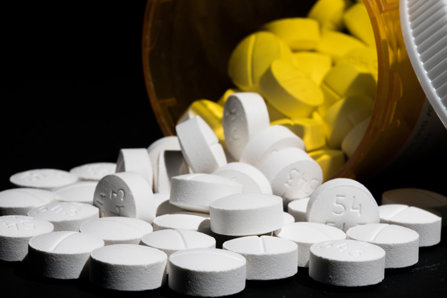What’s the Difference Between Percocet & Vicodin?

With so many prescription drugs on the market today, it’s important to understand what exactly you’re taking, it’s side-effects, potential for addiction, etc. Most people blindly trust their doctor, thinking it’s inconceivable they would give them a medication that would inherently harm them, but then most people would be wrong. A lot of the narcotic medications given by physicians are highly addictive and extremely dangerous if abused. Knowledge is power. Know what you’re taking and have a full understanding of the risks and benefits associated with it.
Drug education is one of the keys in fighting addiction.
Today we are looking at two medical drugs that are commonly associated with each other: Percocet (also called 512’s, percs, paulas, blue dynamite), and Vicodin (vikes, vikings, yellows, Watson-387).
Percocet
Percocet is a combination of acetaminophen (Tylenol) and oxycodone. Oxycodone is an opiate, and the Tylenol actually strengthens the effects of the oxycodone.
Percocet is prescribed for moderate to severe pain, however, because it is an opiate, it is very addictive. People who are addicted to Percocet often chase a high which includes euphoria, numbness and extreme relaxation. However, just like any opiate, overdose is possible if too much of the drug is taken, not to mention the liver damage that occurs from taking too much Tylenol.
Overdose symptoms for Percocet can include extreme drowsiness, pinpoint pupils, muscle weakness, clammy skin, weak pulse, coma, and blue lips. That’s from the oxycodone portion of the drug. However, we are dealing with a combination of two drugs—so overdose can also come from the acetaminophen—these symptoms might include: nausea, vomiting, stomach pain, liver failure, sweating, confusion, and jaundice.
Vicodin
Vicodin is hydrocodone mixed with acetaminophen. Hydrocodone is a synthetic opiate (this means that scientists start with a drug made from opium and modify it in the laboratory to make hydrocodone), and acetaminophen (Tylenol) again strengthens the affect hydrocodone has.
Like Percocet, Vicodin is an addictive painkiller. The hydrocodone portion of Vicodin is made by mixing two substances (as said above –it’s synthetic). This mixture is very damaging to the liver and is one of the differences between Percocet and Vicodin. Percocet is damaging to the liver because it contains acetaminophen, but when it comes to Vicodin, both of the components that make it up damage the liver.

Other Differences between Percocet and Vicodin
Vicodin and Percocet affect the human body differently, so if the user is already on a medication for something else, a doctor is more likely to prescribe one painkiller over another.
For example, if the individual is on antidepressants, a doctor is more likely to prescribe Percocet, as Vicodin can cause harmful physical and mental reactions when combined with most antidepressants. In fact, James Holmes, the shooter at the movie theater in Aurora Colorado where the Batman movie was playing, was on a mix of Vicodin and anti-depressants when he went on his killing spree.
Another difference between these two drugs: with Vicodin, the risk of liver issues (nausea, jaundice… death) is higher than with Percocet. However, because they are both opiates, the overdose symptoms and the high the user is chasing are pretty similar. Both Percocet and Vicodin are also similar in that they are both prescription pain relievers—used for moderate to severe pain.